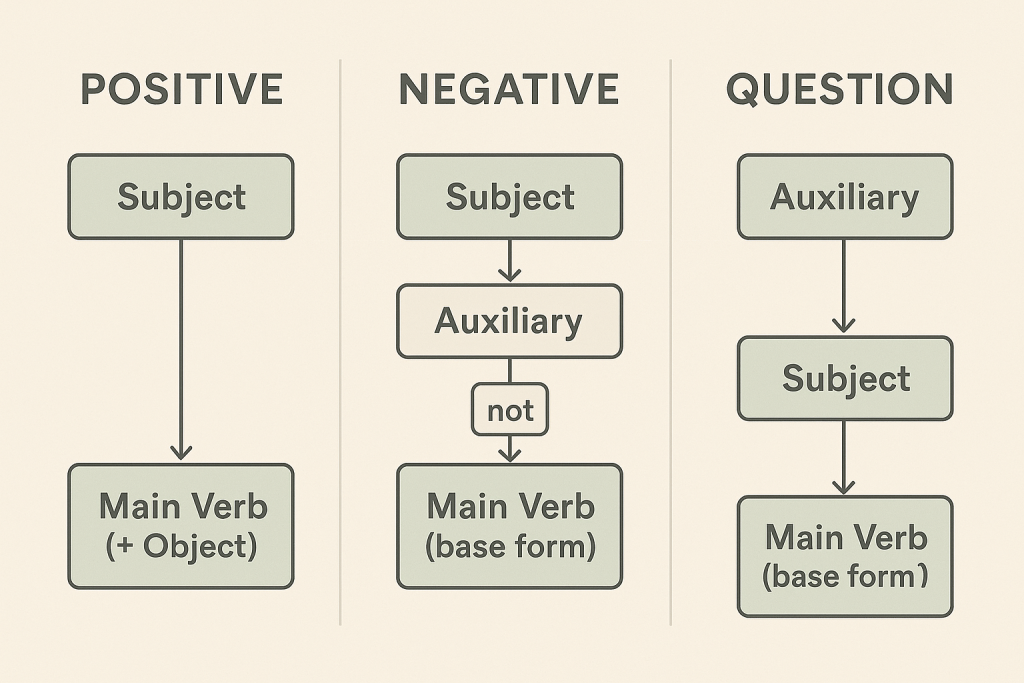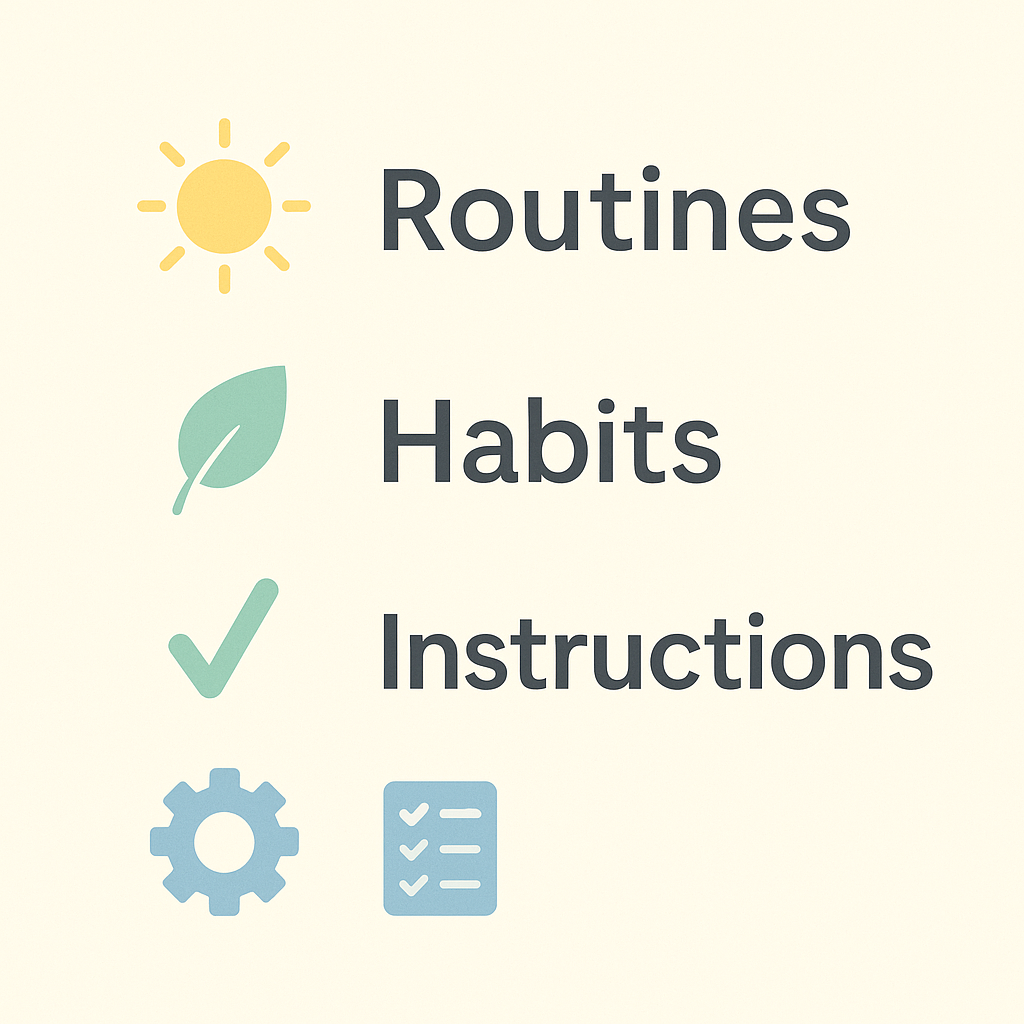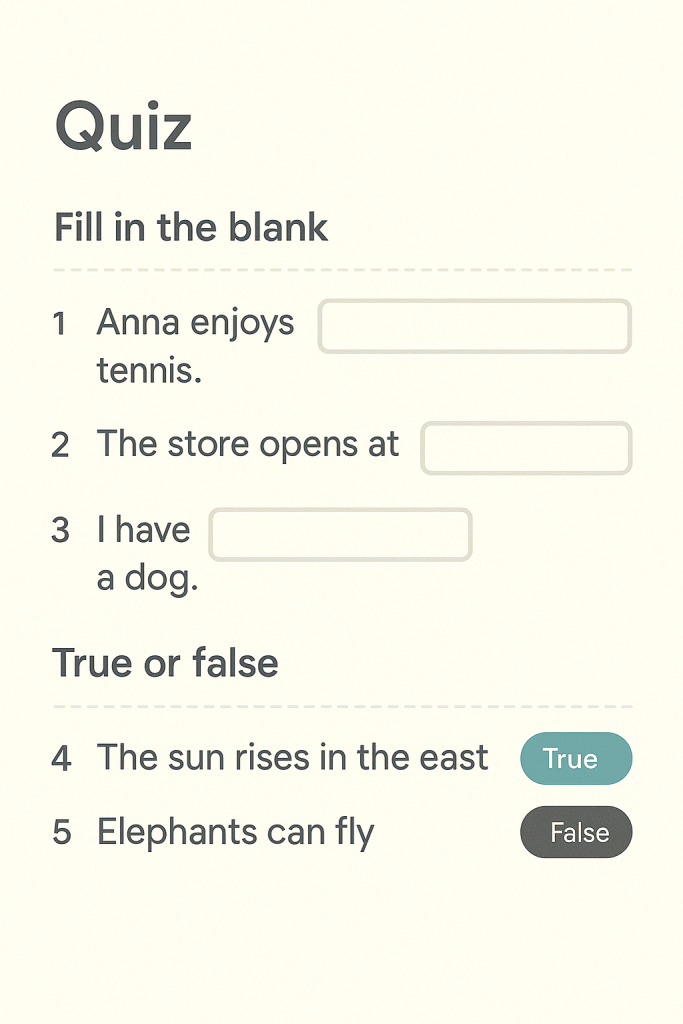What Is the Simple Present Tense and Why Should You Care?
Picture this: you finally muster up the courage to speak English… and immediately sound like a time-traveling wizard because you can’t get your tenses right. Tragic.
The simple present tense is your ride-or-die for basic communication. It’s used to describe habits, routines, facts, emotions, and pretty much anything happening on a regular basis. Without it, your conversations would be a grammatical horror show.
In this guide, we’ll break down the simple present tense rules, show you how to actually use them without weeping, and throw in plenty of simple present tense examples (because, shockingly, examples help). You’ll also see real-life dialogues, comparisons to other tenses (like the simple future tense), and some easy exercises you can fail at first and master later. If you want a quick definition, Cambridge provides a great overview of the present simple tense.
Let’s get it over with.
Simple Present Tense Rules Made Ridiculously Easy

The simple present tense is basically the “default setting” of English verbs. It describes:
- Habits: “I brush my teeth every day.”
- General truths: “The Earth orbits the Sun.”
- Feelings and states: “She loves pizza.”
Basic Structure:
- Affirmative: Subject + base verb (add -s/-es for he, she, it)
- Negative: Subject + do/does not + base verb
- Question: Do/Does + subject + base verb?
Yes, it looks disgustingly simple. But small traps await you, like when to add -s or -es (you might want to peek at verbs ending in -s if you enjoy suffering).
And if you ever wonder what makes a sentence “simple” at its core, check out this guide to simple sentences.
You can also find a clean explanation with examples on Oxford Learner’s Dictionaries.
For even more examples and extra grammar insights, you can also visit the British Council’s present simple guide.
How to Form Sentences: Positive, Negative, Questions
If you’re wondering “how to use simple present tense without looking like an NPC,” here’s where it gets spicy.

1. Daily Routines
Talk about your boring daily life:
“I wake up at 7 AM.” “He drinks coffee every morning.”
2. Habits and Traditions
Brag about how healthy (or unhealthy) you are:
“They exercise twice a week.” “We celebrate Christmas every year.”
3. Universal Truths
Channel your inner National Geographic host:
“Water boils at 100 degrees Celsius.” “Cats hate water.”
4. Emotions and States
Get in touch with your feelings:
“I love weekends.” “She feels tired today.”
5. Instructions and Directions
Boss people around politely:
“You mix the flour with water.” “First, you open the app.”
Want more spice in your English? Explore some underused regional idioms and sound more like a local!
Examples of Simple Present Tense in Daily Life

Here are real-life dialogues, so you can stop sounding like a confused robot:
At Work:
A: Do you check your emails every morning? B: Yes, I read and reply to urgent ones first.
At School:
A: When does your class start? B: It starts at 9 AM.
At Home:
A: What do you cook for dinner? B: I usually make pasta.
Need help writing fancier sentences? Try checking some advanced grammar tips and pretend you’re sophisticated.
Or boost your storytelling by understanding the basics of creative writing degrees.
If you’re still unsure about subject-verb agreement, Grammarly offers a quick refresher in their present tense guide.
Mistakes You’re Probably Making (and How to Fix Them)
| Feature | Simple Present | Present Continuous |
|---|---|---|
| What it describes | Habits, facts, routines | Actions happening right now |
| Example | She walks to school. | She is walking to school. |
Note: If you mix them up, don’t worry. Everyone else is too busy panicking about punctuation rules to notice.
And if you want a broader view, don’t miss The Simple Verb Tense Overview.
Simple Present vs. Present Continuous: Who Wore It Better?Interactive Exercises: Because Practice is Mandatory
Time to stop scrolling and start doing.

Exercise 1: Fill in the blanks
- She ___ (work) at a bank.
- They ___ (play) soccer on weekends.
- I ___ (not like) spicy food.
Exercise 2: True or False?
- Simple present is only for talking about the past. (False)
- “He watches TV every night” is correct. (True)
Exercise 3: Make sentences
- Subject: We | Verb: travel | Hint: every summer
- Subject: My cat | Verb: sleep | Hint: a lot
Answer Key:
- works, play, do not like
- False, True
- We travel every summer. / My cat sleeps a lot.
Need an extra hand? Use our free grammar checker or try a paraphraser if you want to remix your sentences.
Test Yourself: Quick and Fun Simple Present Exercises
Congratulations, you’ve survived this guide — and hopefully, you now know how to use the simple present tense like a semi-functioning adult. Mastering it makes English feel less like wrestling a wild animal and more like taming a very stubborn cat.
Now it’s your turn! Drop your own simple present sentences in the comments! Or, if you feel fancy, create your own dialogue scene.
And if you want to upgrade your English skills faster than your last phone update, check out other guides like conditional sentences rules, reported speech rules, and even brush up on English prepositions.
FAQ
Q1: What are the rules of simple present tense?
Use the base verb for all subjects except he, she, it—they get an -s or -es. For negatives and questions, drag in do/does. It’s like adding training wheels to a verb.
Q2: When should I use simple present tense?
When you talk about habits, facts, or anything as repetitive as your coffee addiction. If it’s routine, it’s present.
Q3: What is the structure of simple present tense sentences?
- Affirmative: She runs
- Negative: She does not run
- Question: Does she run?
If you notice, “run” stays loyal. It’s “do/does” doing the heavy lifting.
Q4: Why is simple present tense confusing?
Because English wants to look simple, but then it slaps you with exceptions like “He has” instead of “He haves”. Thanks for nothing.
Q5: How do I get better at using the simple present tense?
Practice with your own routine: “I scroll Instagram. I avoid my responsibilities. I pretend to study grammar.” Voilà — grammar and therapy in one.
